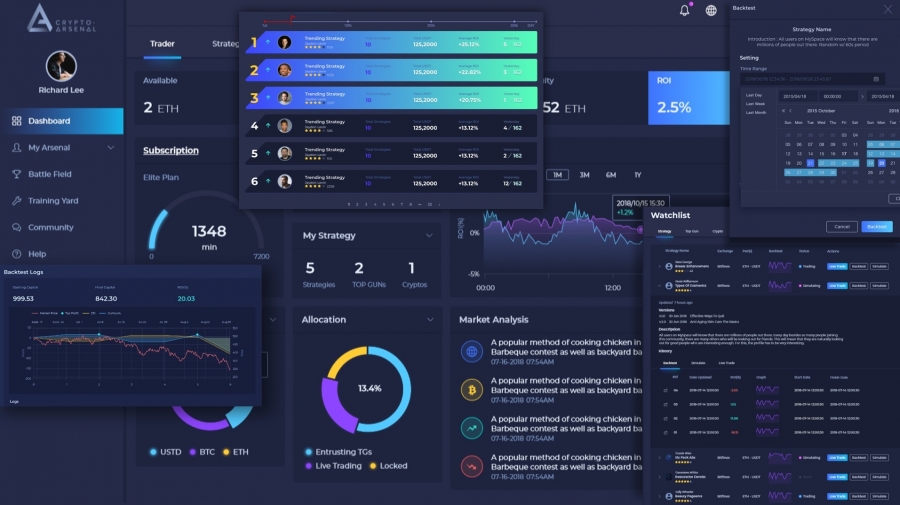Best Hints For Choosing Automated Systems
Wiki Article
Why Not Backtest On Different Timeframes To Verify Your Strategy's Robustness?
Since different timeframes provide different perspectives and prices, backtesting is essential to make sure that a trading plan is robust. Backtesting a strategy can give traders a greater understanding of how it performs under different market conditions. Furthermore, traders are able to see if the strategy is reliable over different time frames. A strategy that performs well in a daily timeframe could not perform as well in a monthly or weekly time frame. Backtesting the strategy helps traders find the flaws in their strategy and adjust it if needed. Backtesting with multiple timeframes provides an additional advantage: it aids traders to determine the most suitable time frame to implement their strategy. Backtesting on multiple timeframes can help traders determine the most appropriate time horizon. Different trading styles and trading frequencies may be preferred by traders. Backtesting provides traders with greater insight into the performance of the strategy. This allows them to make better informed decisions regarding its reliability and the consistency of the strategy. Check out the best emotional trading for more advice including trade indicators, best crypto trading platform, trading with indicators, divergence trading forex, trading with divergence, backtesting trading strategies free, cryptocurrency trading bots, cryptocurrency backtesting platform, cryptocurrency trading bot, best indicators for crypto trading and more.

Why Backtest Multiple Timeframes To Speed Up Computation?
Backtesting with multiple timeframes is not necessarily more efficient in terms of computation, since backtesting on a single timeframe can be completed in the same manner. It is important to backtest the strategy on different timeframes to validate its robustness and to make sure it performs consistently in different market conditions. Backtesting on multiple timesframes is the process of testing the same strategy on different timeframes (e.g. daily, weekly or weekly, and even monthly) before analyzing the outcomes. This method can provide traders with a more comprehensive view of the strategy's performance, and also help identify any potential flaws or inconsistencies within the strategy. Backtesting over multiple timeframes can make the process more complex and take longer required to complete the process. Backtesting on multiple timeframes could make more complicated and take longer needed for computation. Thus, traders have to carefully weigh the trade-off between potential benefits and the computation time and the additional time. When deciding whether to backtest multiple timeframes, traders should be aware of the tradeoff between possible benefits and additional time and computational requirements. Take a look at the recommended automated trading platform for blog examples including forex tester, are crypto trading bots profitable, stop loss in trading, backtest forex software, best crypto indicator, cryptocurrency trading bots, divergence trading forex, automated trading, stop loss meaning, position sizing and more.

What Are The Backtest Considerations For Strategy Type, Elements And Trades?
If you are backtesting a strategy for trading There are many important considerations to keep in mind regarding the strategy type as well as the strategies elements and the number of trades. These variables can impact the outcome of the backtesting procedure. It is important that you be aware of the type and the kind of strategy being tested back.
Strategies Elements: Strategy elements, such as requirements for entry and exit, position size, risk management and risk management may each have a significant impact on the backtesting results. These elements must be considered when evaluating the strategy's effectiveness and making any necessary adjustments to ensure that the strategy is stable and reliable.
Number of Trades The number of backtests can affect the outcomes. A high number of trades can provide a better overview of the strategy's effectiveness but can also increase the computational demands for the backtesting process. While a lesser amount of trades could result in an easier and faster backtesting process, it may not be able to provide an accurate view of the strategy's effectiveness.
To ensure precise and reliable results, traders must consider the kind of strategy they are using and the elements when backtesting trading strategies. These aspects will allow traders to evaluate the performance of the strategy and take informed decisions about its reliability and durability. View the top rated forex backtest software for site info including backtesting, crypto backtesting, position sizing in trading, free crypto trading bot, trading platforms, stop loss, what is backtesting, algo trading strategies, automated forex trading, software for automated trading and more.

What Are The Passing Criteria For Equity Curve, Performance And Number Of Trades?
The key criteria traders use to evaluate the performance and success of a plan for trading by backtesting is the equity curve, performance metrics and the number of transactions. These could include performance metrics such as the equity curve and the number of trades. It's a measurement of a trading strategy's performance and provides an overview of its overall trends. A strategy is likely to meet this test if its equity curve is showing consistent improvement over time, with very little drawdowns.
Performance Metrics: Investors could take into consideration performance metrics other than the equity curve when considering their trading strategy. The most frequently used measures include profit factor, Sharpe ratio, maximum drawdown, and average duration of trade. This criteria can be met if the strategy's performance metrics are within acceptable limits and show consistent and reliable performance throughout the backtesting phase.
Quantity of Trades - This is a key criterion for evaluating the strategy's performance. If a method generates enough trades during the backtesting process to provide a complete report of its performance it might be thought to meet this criteria. But, it is important to note that the effectiveness of a strategy can not be determined solely based on the number of trades generated. Other aspects, like the quality of trades, must be taken into consideration.
The equity curve, performance metrics, trades, and the number of trades are all important elements in evaluating a trading strategy's performance through backtesting. This helps traders make informed decisions about whether the strategy is solid and solid. These metrics help traders assess their strategies and adjust their strategies to improve their performance.